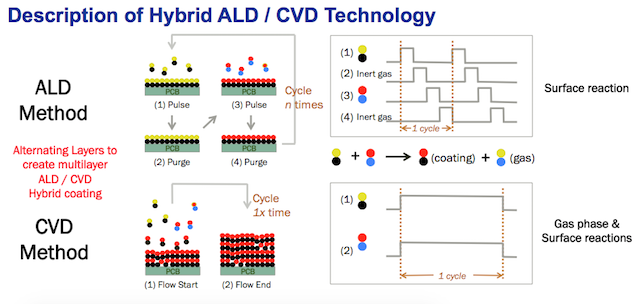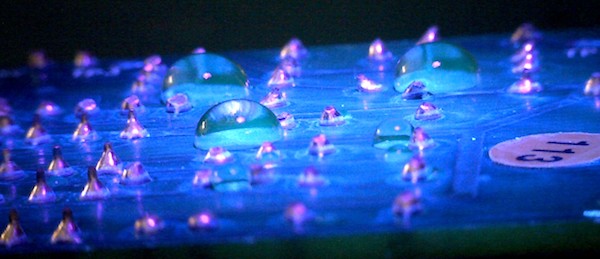Molecular Vapour Deposition (MVD) is a new process introduced to the electronics coating market.
MVD is a hybrid coating technique using ALD (Atomic Layer Deposition) and CVD (Chemical Vapor Deposition) coating processes in combination.
The method uses multiple layers of ultra-thin coatings with differing properties to build a completely protective coating with a final hydrophobic Nano coating as a top layer.

Here are three key points that strongly suggest you should find out more about this coating:
- The physical and electric performance of the MVD coating is superior to other materials like conformal coatings and Parylene. Parameters such as Water Vapor Transmission Rate (WVTR), hydrophobicity, coating adhesion, dielectric strength and temperature performance (>250°C) are vastly improved when protecting circuit boards.
- The MVD coating does not require masking to protect sensitive components and electric connectivity in connectors is easily made even when coated. This is because the coating thickness of the MVD material is x10 less than that of Parylene.
- The cost of process is much lower than all other protective materials due to the fact that raw ingredients are low cost and no masking is required.
There are many other performance criteria that make this material a really interesting process that could change perceptions.
For further reading try the Nexus Blog articles
- The Science behind Molecular Vapor Deposition (MVD) coating in protecting circuit boards
- What is Molecular Vapor Deposition
- Coating LEDs with a hybrid ALD / CVD Process
See how this coating could improve the performance of your circuits now.
Want to find out more about Molecular Vapor Deposition?
Contact us to discuss your needs and let us explain how we can help you.
Find out how we can help you with your conformal coating process now.
Contact us now.


